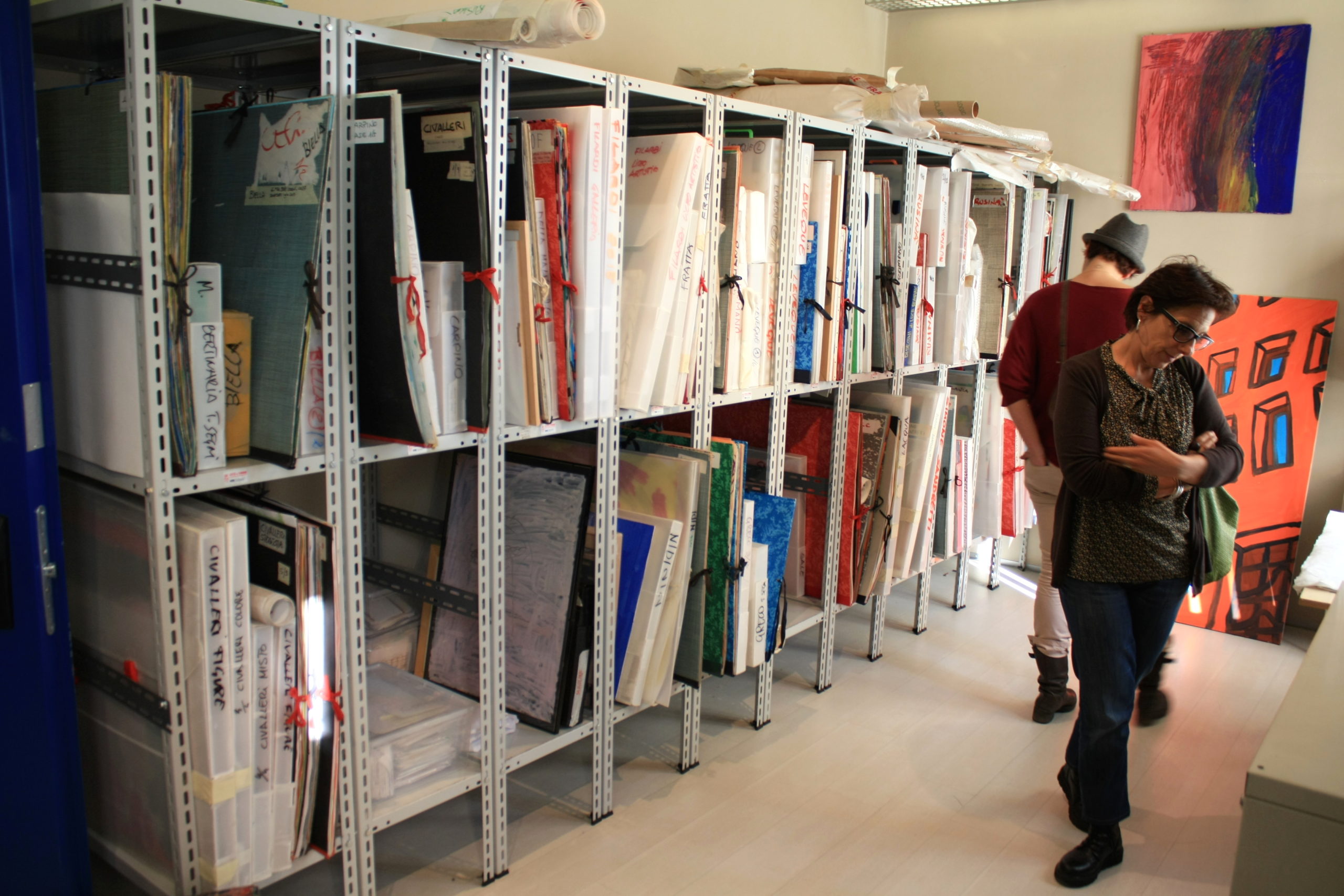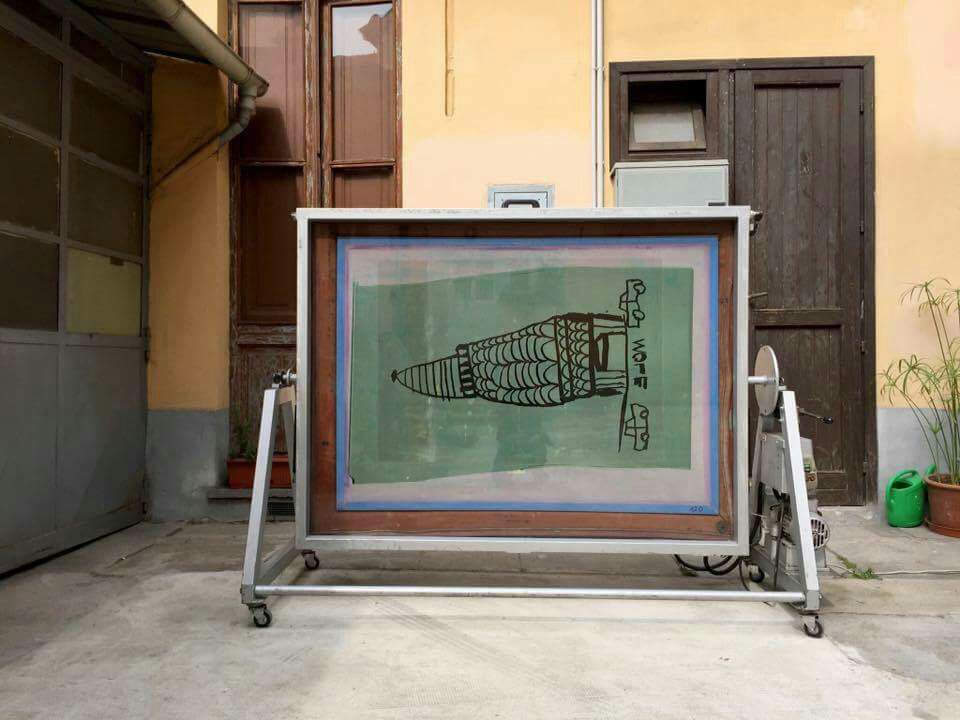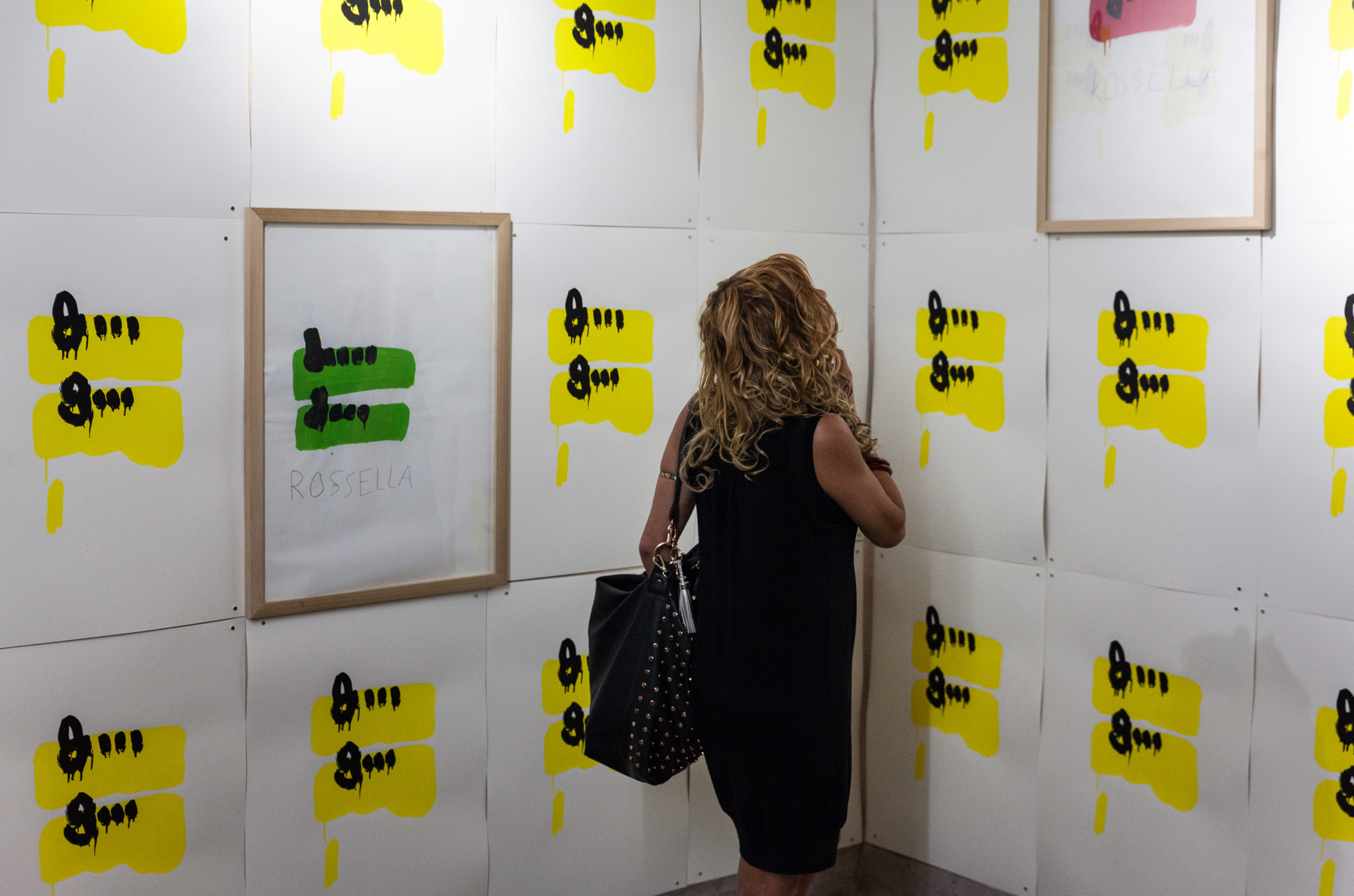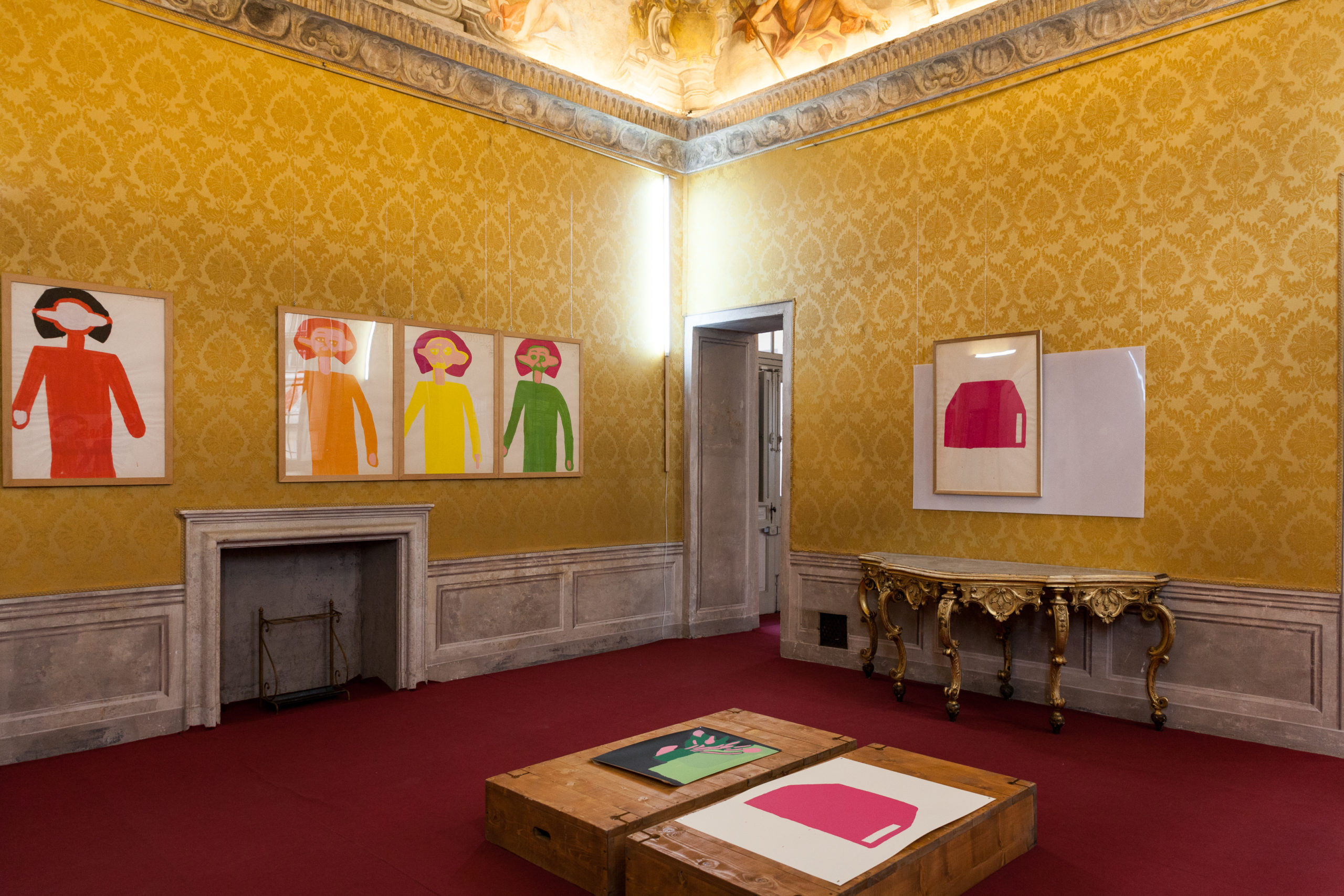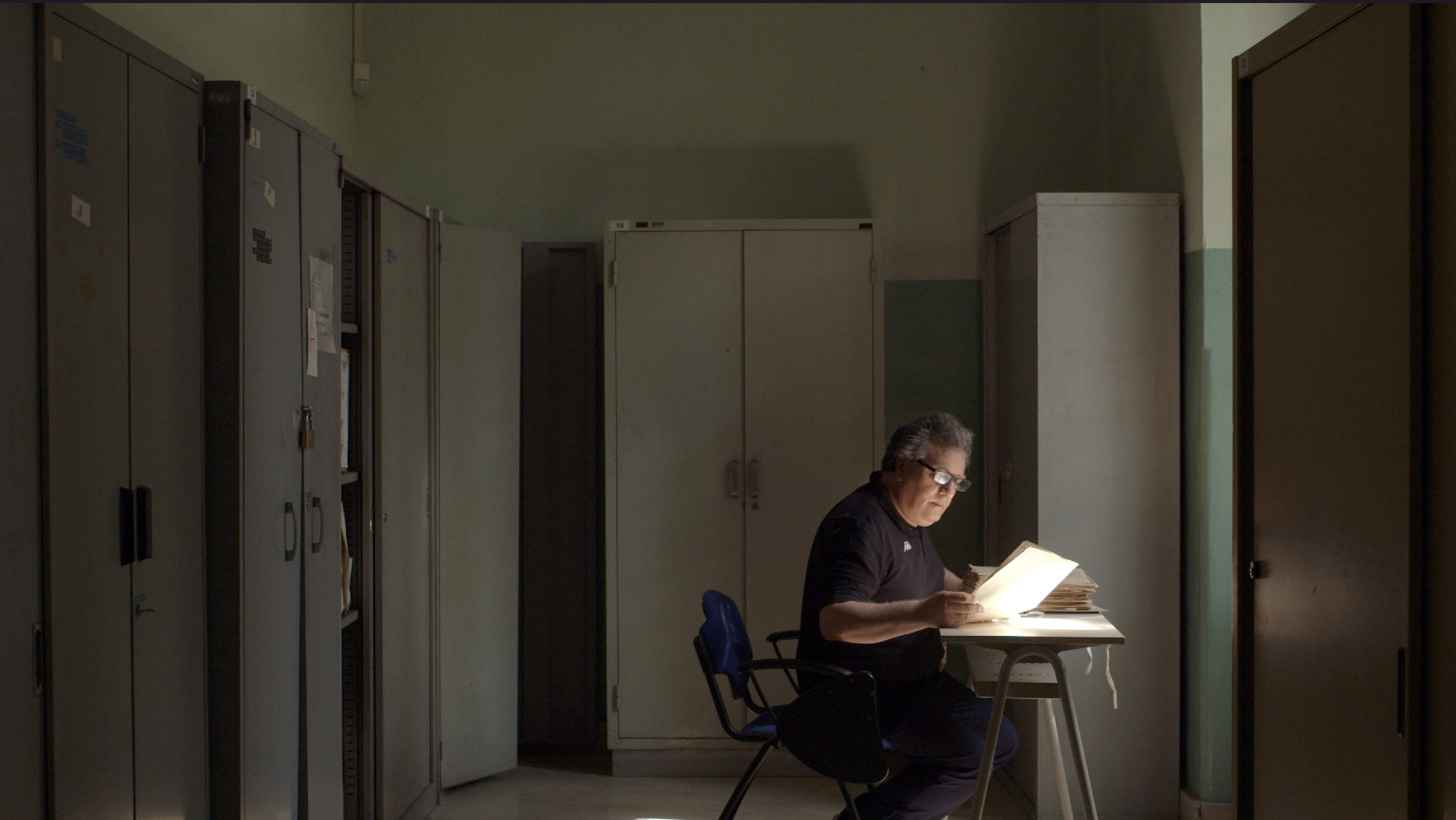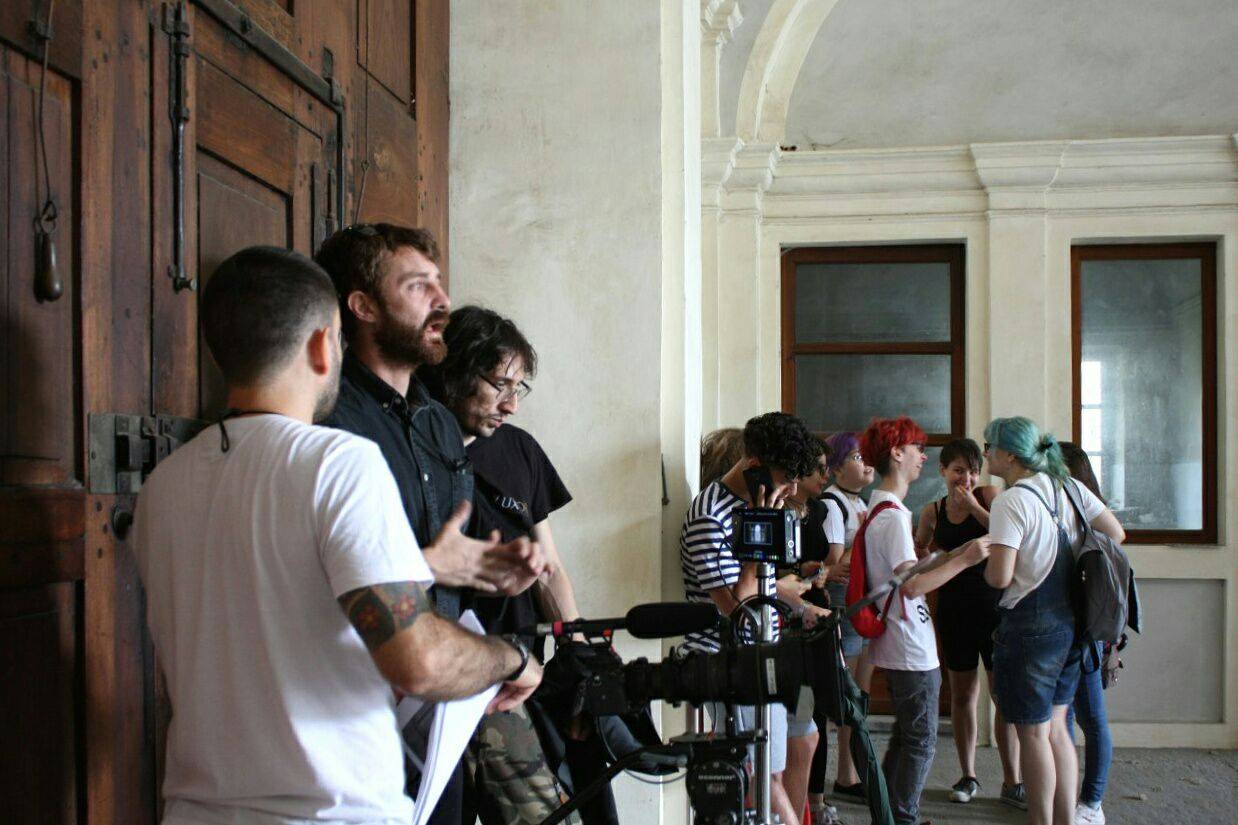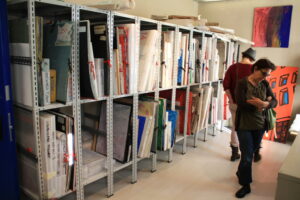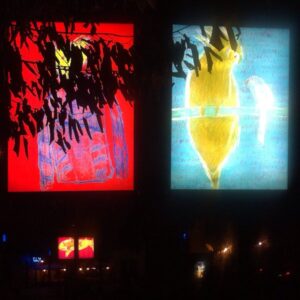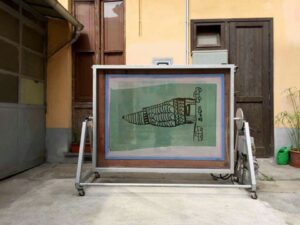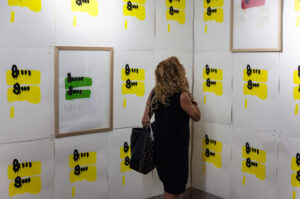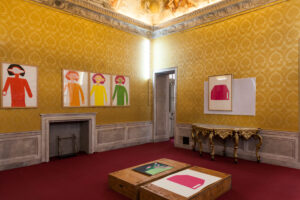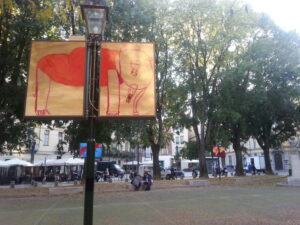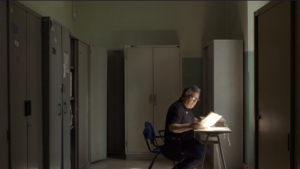Mai Visti e Altre Storie è un progetto che valorizza le collezioni (opere, pratiche e saperi) e gli autori torinesi e piemontesi di Arte Irregolare* (storicamente definita come Art Brut e più di recente Outsider Art), che rappresentano un patrimonio artistico e culturale inconsueto e a rischio di dispersione. Ha come fine la successiva apertura di un centro sperimentale permanente e si offre come occasione per riflettere sulla permeabilità dei confini tra normalità e marginalità, tra arte outsider e pratiche artistiche riconosciute.
Nasce dall’interesse per il consistente patrimonio relativo all’Art Brut presente sul territorio cittadino e raccolto in collezioni storiche (Museo di Antropologia ed Etnografia del Polo Museale Universitario), cui si aggiungono collezioni più recenti, in ombra, costituite da opere irregolari di autori del presente conservate presso l’ASL TO3 (opere dagli anni ’60 realizzate nell’ex Ospedale Psichiatrico di Collegno), e il Servizio Disabili della Città di Torino (di cui fanno parte anche collezioni private di cooperative, associazioni e singoli). Nello specifico, prende le mosse dalle due edizioni di L’arte di fare la differenza (2012-2014 – ideazione e coordinamento scientifico di Anna Maria Pecci, curato da ARTECO): un precedente progetto dedicato al dialogo fra artisti outsider e giovani artisti, impegnati nella realizzazione di opere co-autoriali a partire dal confronto con le collezioni del Museo di Antropologia ed Etnografia dell’Università degli Studi di Torino. Dal confronto con una serie di istituzioni europee attive nel campo della valorizzazione dell’arte irregolare è emersa la necessità di studiare una storia importante per l’Italia e per il Piemonte nello specifico, ma poco nota al grande pubblico.
2015 · 2016
Nel primo anno il progetto ha avuto come obiettivo la pubblicazione di un archivio on line delle opere censite e catalogate, realizzato con software collective access e oggi disponibile sul sito maivisti.it. Oltre al censimento e alla catalogazione delle opere è stato intrapreso un parallelo percorso di divulgazione in contesti istituzionali e non, con restituzione al pubblico più ampio attraverso una serie di mostre, installazioni (Luci d’Artista) ed eventi urbani a carattere partecipato rivolti anche al pubblico potenziale e non specialistico in termini di community engagement, o ancora specifici momenti di formazione per studenti dell’Accademia e dell’Università (UniTO e UniBO), educatori, OSS dei servizi alla persona, educatori museali, insegnanti, cooperative e associazioni culturali.
Sempre nell’ottica di una diversificazione del pubblico e al fine di portare il progetto in contesti culturali giovani e internazionali, si è proseguito attivando una serie collaborazioni con il mondo dell’editoria indipendente e delle arti grafiche: con Nu®ant, magazine dedicato al mondo dell’illustrazione contemporanea e /maı prınt/, sotto-progetto realizzato in collaborazione con Print About Me, consistente nella riproduzione delle opere originali in stampe serigrafiche e in tiratura limitata.
2016 · 2017
Di pari passo con il proseguimento del lavoro di schedatura e formazione, la seconda edizione del progetto si è posta l’obiettivo di realizzare una serie di mostre inserite in circuiti artistici più ampi, giovani e sperimentali come il festival d’arte contemporanea NESXT e di continuare le collaborazioni con il mondo dell’editoria indipendente e delle arti grafiche, con la valorizzazione delle opere dell’archivio attraverso la diffusione delle riproduzioni di cui sopra presso librerie di arte e design e bookshop inseriti in enti e istituzioni nazionali e internazionali. Anche studenti del Liceo Artistico R. Cottini sono stati coinvolti, attraverso un progetto di Alternanza scuola-lavoro in un percorso educativo con obiettivi specifici legati all’acquisizione di competenze sulla schedatura dell’arte irregolare.
Si situa all’interno del progetto Mai Visti e Altre Storie anche la residenza di Giulio Squillacciotti, artista impegnato in un progetto di ricerca sull’archivio e il patrimonio in esso conservato, con la produzione di opere capaci, da una parte, di raccontare e divulgare il progetto, e dall’altra di “viaggiare” ed essere fruite anche in altri circuiti, come opere autoriali autonome. La ricerca di Giulio Squillacciotti e la produzione di opere destinate alla sua mostra personale Visto due volte, presentata a Barriera nel 2017, sono state accompagnate da un public program. Alcune delle opere prodotte a seguito della residenza sono state successivamente esposte nell’ambito di mostre collettive rilevanti nel panorama dell’arte contemporanea italiana e selezionate come vincitrici nell’ambito di premi internazionali.
Pubblicazioni e convegni
. A. Pellino, B. Zanelli, Da un patrimonio diffuso a un archivio digitale e B. Zanelli, Il “rebus” Mauro Gottardo, in D. Rosi, T. Taramino (a cura di), Fuoriserie, catalogo della mostra 6 ottobre – 12 novembre 2017, Palazzo Barolo, Torino;
. A. Pellino, La storia accade in un cronotopo e B. Zanelli, Non è lo straordinario ad attrarre ma la peculiarità dell’ordinario, testi critici pieghevole mostra Visto due volte | Giulio Squillacciotti, 26 settembre – 15 ottobre 2017, BARRIERA, Torino;
. A. Pellino, B. Zanelli, Da un patrimonio diffuso a un archivio digitale. Il modello piemontese, in E. Di Stefano (a cura di), “Osservatorio Outsider Art” anno 2017 numero 13;
. B. Zanelli, Pratiche di archiviazione, testo critico pieghevole mostra Pratiche di Archiviazione, 26 ottobre – 6 novembre 2016, Arteco Temporary Space – Circuito NESXT, via Alessandria 35, Torino;
. Tavolo Cultura e Salute. Verso il welfare culturale. Dalle pratiche alle politiche, ARTLAB16. Territori, Cultura, Innovazione, Mantova 29 settembre – 1 ottobre 2016;
. Schede di catalogo opere Gaetano Carusotto, in D. Rosi e P. Assmann (a cura di), Arte altra letteratura e poi per sempre l’umanità, catalogo della mostra 8 settembre – 1 novembre 2016, Palazzo Ducale, Mantova;
. Schede di catalogo opere Giorgio Barbero, in D. Rosi (a cura di), Irregolari, sguardi laterali nell’arte italiana, catalogo della mostra 9 luglio – 9 ottobre 2016, Palazzo Assessorile di Cles (Trento);
. Mai Visti e Altre Storie presentato come case history, convegno Open (Re)Source 2016: Archivi Storici 2.0 a cura di Promemoria, Teatro Piccolo Regio Puccini, Torino 9 giugno 2016;
. Nurant. Numero 22 della rivista d’illustrazione contemporanea che ospita tavole di illustratori emergenti e outsider, con un racconto di Giusi Marchetta. “E tutto gira intorno alla stanza” è il tema su cui si sono confrontati artisti outsider e giovani illustratori: “un viaggio nella rappresentazione del Super-Io: il Super-Eroe che ci permette di fare cose straordinarie ed evitare disastrosi fallimenti. Che ognuno di noi ce l’abbia è certo, decidere di ascoltarlo o meno, poi, è un fatto personale”, aprile 2016;
. Presentazione Inquietudine delle intelligenze. Contributi e riflessioni sull’Arte Irregolare, VI Quaderno sulle Arti Irregolari (IAAP, International Association for Art and Psychology), Palazzo Barolo, Torino 5 giugno 2015.
*Per “artista irregolare” si intende un autore indipendente che fa parte di un’ampia schiera di: autodidatti, semplici o eruditi visionari, persone con disabilità intellettiva e/o fisica, sensoriale, personalità eccentriche che perseguono singolari forme d’arte con modalità espressive e una scelta dei soggetti senza (apparente) desiderio di un confronto con il “sistema dell’arte”. Viceversa, va da sé, che non tutte le “espressioni creative” di persone autodidatte o in condizione di disagio psico-fisico e/o sociale sono da considerarsi “arte”.
Mai Visti e Altre Storie is a project that valorises the collections (works, practices and skills) and the artists of Turin and the rest of Piedmont of Arte Irregolare (historically defined as Art Brut and more recently ‘Outsider Art’), representing an unusual form of artistic and cultural heritage at risk of dispersion. The goal of it is the upcoming opening of a permanent experimental centre, and provides an opportunity to reflect on the permeability of the borders between normality and marginality, between ‘Outsider’ art and recognised artistic practices.
It emerged from the interest in the sizeable heritage of Art Brut to be found around the city, held in a number of historical collections (such as the Museum of Anthropology and Ethnography of the University Museum Centre), as well as several more recent and lesser-known collections, featuring works by Outsider artists of the present and found at the ASL TO3 (works from the ’60s produced in the ex-Psychiatric Hospital of Collegno), and at the Service for the Disabled of the Turin City Council (which also features private collections by cooperatives, associations and individuals). In specific terms, it is inspired by two editions of L’arte di fare la differenza (2012–2014 – ideation and academic coordination by Anna Maria Pecci, curated by ARTECO): a previous project dedicated to the dialogue between Outsider artists and young artists, focusing on the creation of co-produced works, drawing inspiration from the collections of the Museum of Anthropology and Ethnography of the University of Turin. By interfacing with a series of European institutions active in the field of the valorisation of Outsider Art, the need emerged to study a piece of history of great importance for Italy and for Piedmont in particular, yet largely unknown to a wider audience.
2015–16
In its first year, the aim of the project was to publish an online archive of the works that had been documented and catalogued, carried out using collective access software and viewable today on the website maivisti.it. As well as the documentation and the cataloguing of the works, a parallel path of promotion within and beyond institutional settings was undertaken, with broad-ranging public displays through a series of shows, installations (Luci d’Artista) and participatory urban events also aimed at a non-specialist audience, stressing the importance of community engagement. There were also specific training moments for students of the Academy and the University (of both Turin and Bologna), educators, social health workers, museum educators, teachers, cultural cooperatives and associations.
Again with a view to diversifying the audience and taking the project into young and international contexts, progress was then made by activating a series of collaboration projects with the world of independent publishing and graphic arts: with Nu®ant, a magazine dedicated to the world of contemporary illustrations, and /maı prınt/, a sub-project carried out in collaboration with Print About Me, consisting of the reproduction of original works in silkscreen prints and as limited editions.
2016–17
Alongside the continuing work on documentation and training, the second edition of the project set itself the goal of staging a series of shows to be featured in broader young and experimental artistic circuits, such as the contemporary arts festival NESXT, and to maintain its collaborations with the world of independent publishing and graphic arts, with the appraisal of works from the archive through the promotion of reproductions as shown above at art and design bookshops, including those found in national and international bodies and institutions. The students of the artistic lyceum R. Cottini were also involved, through a work-school sandwich course project as part of an educational process with specific aims linked to the acquisition of skills on the documentation of Outsider Art.
Mai Visti e Altre Storie also included the residency of Giulio Squillacciotti, an artist involved in research into the archive and the heritage to be found within it, with the production of works capable on one hand of narrating and promoting the project, and on the other of ‘touring’ and being valorised also by other circuits, as artistic works in their own right. Giulio Squillacciotti’s research and the production of works that would be featured in his solo show Visto due volte, presented at Barriera in 2017, were accompanied by a public programme. Some of the works produced in the wake of the residence were then featured as part of key group shows within the panorama of contemporary Italian art, going on to win various international prizes.
*By the term ‘Outsider’ artist, we mean an independent artist who is part of a wide range including: autodidacts, simple or erudite visionaries, people with intellectual and/or physical, sensorial disabilities, eccentric figures who follow particular art forms with means of expression and a choice of subjects which denote an (apparent) lack of desire for inclusion within the ‘art system’. Vice versa, it goes without saying that not all the ‘creative expressions’ of autodidacts or those in a state of psychic-physical and/or social difficulty are to be considered ‘art’.
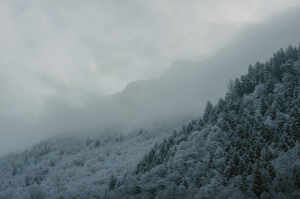
ARIANNA ARCARA / Altra versione dello stesso...
Sabato 16 ottobre, alla Pinacoteca G.A. Levis di Chiomonte, apre al pubblico la mostra Altra versione dello stesso paesaggio della fotografa Arianna {...}
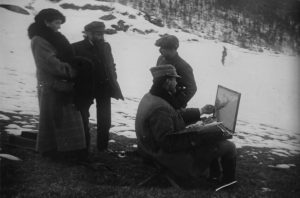
Autunno e inverno in Pinacoteca G.A. Levis /...
Mostra temporanea Altra versione dello stesso paesaggio – Arianna Arcara 16 ottobre 2021 – PROROGATA sino al 6 giugno 2022 Percorsi guidati {...}
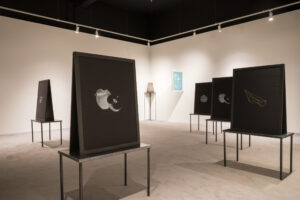
COSIMO VENEZIANO / BIOMEGA MULTIVERSO
Nell'ambito di Biomega, una mostra presso CAMERA e una pubblicazione edita da NERO, dedicate al lavoro transdisciplinare di Cosimo Veneziano {...}
